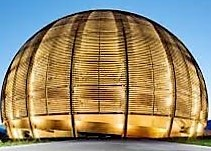Speaker
Description
The impression of mean field and spectator matter has been studied through the collision geometry dependence of reduced flow and elliptical flow in heavy-ion collisions (HICs) at intermediate energies using Isospin-dependent Quantum Molecular Dynamics (IQMD) model for the reaction of $^{50}_{20}$Ca+$^{50}_{20}$Ca and $^{197}_{79}$Au+$^{197}_{79}$Au at incident energy between 50 MeV/nucleon and 450 MeV/nucleon. We observe that at particular incident energy, the magnitude of both types of flow changes its sign from positives to negative (or vice-versa) as the collision geometry increases. The impact parameter at which the reduced flow and elliptical flow changes its sign is termed as balance geometry ($\hat{b}_{bal}$) and transition geometry ($\hat{b}_{trans}$) of flow, respectively. Our study reveals that ($\hat{b}_{bal}$) and ($\hat{b}_{trans}$) increases with increase in incident energy. In addition to this, the effect of nuclear charge radius has also been studied by using the isospin-independent as well independent nuclear charge radii parameterizations.
